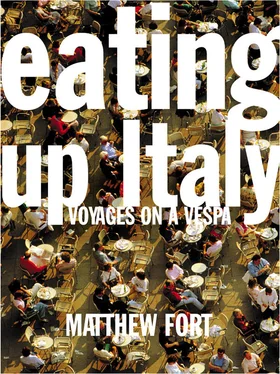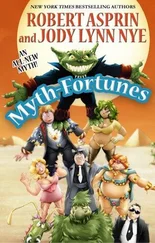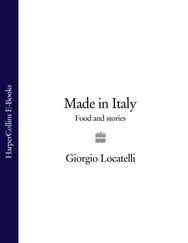‘This swordfish,’ Silvia Cappello addressed the proprietor of Baylik, one of Reggio’s suaver restaurants, through a cloud of cigarette smoke. ‘Is it Italian or Greek?’
‘Italian,’ he replied firmly.
‘Are you sure?’ Her voice rang with disbelief. ‘It’s very early for swordfish here. I think it must be Greek.’
‘Absolutely not,’ he countered with spirit. ‘They are just beginning to catch them in the Straits of Messina.’
‘Hrrummph,’ said Silvia. ‘I’ll have the sea bass.’
She was, if anything, more passionate about food than I. Her large, grey eyes sparkled when she talked about the differing qualities of this café or that, or held forth on the provenance of pastries or the distinctions between the multiplicity of Calabrese dishes. I had met Silvia at the Italian Institute in London, where she taught Italian to people like me. She was Calabrian born and bred and had offered to initiate me in the mysteries of her native cooking. She was in Reggio, visiting her mother, and I had contacted her to take her up on her offer.
‘What was all that about?’ I asked, when the battered man had beaten his retreat with our order.
Silvia explained that the swordfish made their way up the Calabrian coast through the Straits of Messina to spawn. Usually they only arrived at the end of April or the beginning of May. That’s why she was suspicious about the provenance of the swordfish. It was too early for the true Italian catch.
‘So? What’s the difference between a Greek swordfish and an Italian one?’
‘As they come up through the Straits, they are getting amorosi, ready to spawn. It makes their flesh più dolce, più delicato, più morbido – sweeter, more delicate, softer, better in every way.’
‘Can you really tell?’
She looked scandalised. ‘Of course,’ she said in a manner that brooked no further argument. I wondered how many British teachers or food enthusiasts could pontificate knowledgeably on the mating habits of salmon or trout, let alone on how these may affect the edibility of the fish.
I had the swordfish, and I couldn’t have told if it was Italian, Greek or Turkish. But to regard that as important would have been to miss the point. In a sense it didn’t matter whether or not there was a difference. It was believing that there is a difference, believing that quality matters; that was what was important.
Silvia had abiding high expectations in all matters to do with food. For most Calabresi, indeed for most Italians, that I had met, excellence was assumed to be a common goal when it came to eating, and their critical faculties never seemed to rest. Italians discuss what they have eaten, what they are eating, what they are going to eat, with the same matter-of-fact passion that we reserve for the weather; and, in absolute contrast to the English, they criticise openly and fearlessly if they think that food or drink is not as good as it should be. The expectation of gastronomic virtue is as natural as breathing.
I learnt another valuable lesson about swordfish, which applies equally to tuna. If you cut a swordfish or tuna steak about three centimetres thick and cook it right through to bring out the flavour, the flesh dries out and becomes fibrous and tough. So British chefs came up with the bastard concept of the seared tuna. This produces a nice brown crust about half a centimetre deep, beneath which is not nearly so nice, cold, raw and virtually tasteless fish. They tried to persuade us that it was a good thing, when we knew, in our heart of hearts, that it was really pretty nasty. The Italians have been at the business of cooking swordfish and tuna rather longer, and have got it worked out. They cut the fish into slices about one centimetre thick, and cook it very fast by grilling, frying – a padella – in olive oil over a very high heat, and then add salmoriglio (which is no more than olive oil, lemon, garlic and oregano), or just a splash of lemon and a dash of salt. The result is that the fish is cooked through, which brings on the flavour nicely, and still tender and toothsome.
Reggio di Calabria was the urban equivalent to a veteran boxer, not without dignity and a sense of history, but scuffed, tatty and rather beaten up. Long, long ago, as part of Magna Graecia, Reggio had been prosperous, but the combination of earthquake, war and political and criminal exploitation seemed to have knocked the stuffing out of the place. Most of the architecture was of the general-purpose neo-classical style of the 1920s–1940s. In spite of the odd elaborate detail – wrought-iron balcony, cornice or frieze emerging from the broken plaster like that on a social security building – it had a rather Victorian feel.
But among the streets that scrambled up the hillside from the edge of the Strait of Messina were hidden glories to which Silvia introduced me: cafés – Caridi e Lagana, Caffé Malavenda, Le Cordon Bleu. They were efficient, immaculate, gleaming, with pristine display cabinets stuffed with voluptuous pastries: cannoli, kind of boat-shaped, pinched in the middle and stuffed with sweet ricotta; sguta and cuddhuraci, traditional Easter pastries of Greek origin; fancy cakes of chocolate or strawberries; mostaccioli, mzuddi, brioche ripiena di gelato – buns stuffed with ice cream; and sfogliatelle, like pastry oysters, stuffed with ricotta again and dusted with icing sugar. The variations on pastry, almonds, ricotta, candied fruit and sugar seemed endless in their refinements.
The shapes, combinations and ingredients, in particular the use of almonds, were a continuous reminder of how much the cooking of Calabria owes to the Arabs, both directly, through the control that the Moors exerted on the coastal regions in the twelfth and thirteenth centuries, and indirectly, through Sicily on the far side of the Strait of Messina. It was curious, although, on reflection, perhaps not surprising, to discover just how closely Sicily and this, the western, side of Italy, had been linked to the culture of northern Africa, while south-eastern Italy, the Adriatic side, owed more to Byzantium.
For obvious reasons it would be inaccurate to blame the Moors for one of the most distinctive features of cafés and pastry-shop windows: the high-kitsch Paschal lambs formed out of marzipan, covered in white chocolate and decked out in the most fearsome colours, that filled the windows and display cabinets around Easter. These were a reminder, possibly a remainder, of the eighteenth-century southern Italian passion for the more vivid and gruesome aspects of baroque art.
Taking pity on my solitary state, Silvia invited me to lunch on Easter Sunday at home with her mother and her mother’s sister. Signora Cappello was a handsome woman, with a powerful and decisive mien, and her sister, a civil servant, had a dark languor and sharp intelligence. Home was a large flat in up-town Reggio, cool and dark. The walls were hung with an extensive collection of pictures, and the furniture had the heft of old-fashioned virtue. This taste for shade seemed odd given the prevailing weather conditions, but, for most of the year, blinding light and severe heat are the principal enemies. Houses had been built as fortresses against the sun, just as they had been in Britain in the nineteenth century, when it was the fashion for them to face north for fear that too much sunlight would cause curtains and carpets to fade quickly.
I had always thought that my own family’s tribal feasts were pretty substantial, but nothing prepared me for the majestic sequence of dishes of a traditional Calabresi Easter feast. This one started with rigatoni al forno, the kind of dish that anchors you to the table in more ways than one. It consisted of fat, short, ridged tubular pasta with meat balls, mozzarella, provola, cooked ham, Parmesan, melanzane, hard-boiled eggs and sugo – tomato sauce – and it had been baked in the oven.
Читать дальше












